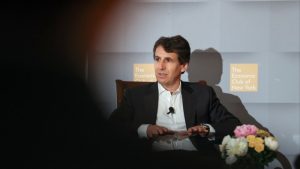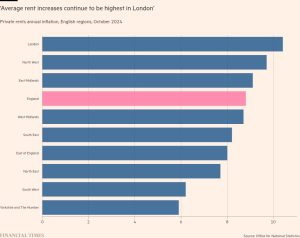At Gucci, making fashion wearable
Unlock the Editor’s Digest for free
Roula Khalaf, Editor of the FT, selects her favourite stories in this weekly newsletter.
Fashion shouldn’t be difficult to understand or wear. That’s the view of Gucci designer Sabato de Sarno, who presented his third womenswear collection at the Triennale di Milano on Friday across red lacquered floors — the identifiable colour of Gucci under his tenure.
The goal of elevating the everyday has been the designer’s intention since his first collection. And while the reset, following seven years of maximalism at the Kering-owned label, came as a shock to many, de Sarno has stuck to his guns: yes, fashion is for expressing oneself, but dressing up doesn’t have to be so far removed from reality.
“Casual grandeur” is how de Sarno described the spring/summer 2025 collection in his show notes, later elaborating backstage that this “means wearing [clothes how] you want and like, but in a very easy way”. This encapsulates his approach to design: nothing is too complicated to wear, or to make sense of.
It can be tricky translating that into impactful advertising campaigns or catwalk shows, where visually striking pieces tend to create the more lasting impressions. That might explain why the show space, lit to mimic the hues of a sunset, felt more intimate this time around. Guests — including Daisy Edgar-Jones, sitting next to Dakota Johnson, and Kirsten Dunst, seatmate to Kering CEO François-Henri Pinault — could see the clothes up close.


On the runway, there were vests and smart trousers accessorised with gold jewellery that wrapped around models’ arms, necks and wrists. It was designed to mimic the handle shape of the Bamboo 1947 bag, an archival style that de Sarno reintroduced this season in lacquer and Plexiglas. De Sarno stated that the bags, not the clothes, were “the star of the show” — an approach that makes sense, given that a majority of the brand’s revenues comes from leather goods and accessories.
There were also lace slips and Grecian draped dresses paired with knee-high boots, which de Sarno clearly has a penchant for — though this time they were a loafer hybrid, with the brand’s signature horse-bit buckle on top. Heavier textures featured, including suede, denim, leather and full sequinned styles, as did surprisingly vibrant colours such as a neon yellow or fiery tangerine print. Closing the show was a quartet of looks: wide-leg trousers with floor-trailing coats and cardigans with the Gucci monogram. “These new shapes and colours are to be worn in a casual way,” de Sarno reiterated.


Unlike past shows, the mood was undeniably joyful. De Sarno received a standing ovation as he took his bow to the tune of “Non voglio mica la luna” by singer Fiordaliso, which every Italian attendee appeared to know and sing along to. “At my last show in September, we played [a remix of] ‘Ancora ancora ancora’ by Mina,” the designer explained. “I’m younger than those songs, but my mum played them a lot when I was a child, so they stick with me.”
The sentimental approach was touching, but it might not be enough to reverse the brand’s fortunes. Plummeting revenues at the brand have been a problem for parent company Kering: Gucci, with €10bn in revenue last year, accounted for half of group sales and two-thirds of profits. Kering’s revenues amounted to €9bn in the first half of 2024, down 11 per cent on a comparable basis. They were dragged down by Gucci, whose revenue was €4.1bn, down 18 per cent like-for-like.


The challenge is getting people excited by de Sarno’s designs, which have now been in stores for around eight months — an issue that has been exacerbated by a wider luxury slowdown. On witnessing pieces such as the embellished coats and sky-high platforms from his former collections worn by influencers and other guests off the catwalk, I thought they looked great. And isn’t dressing for reality what de Sarno has always sought to do?
Perhaps the issue has been creating a meaningful connection to the brand, which ultimately fuels desire. That’s all the more crucial, given Gucci’s average price rises of at least 4 per cent over the past month, according to estimates from investment bank Citi; one wonders if the brand is doing enough to engage those who aren’t at the shows. Hopefully, the recent hiring of former Louis Vuitton and Prada communications executive Stefano Cantino in a newly created deputy CEO role will help.
Sign up for Fashion Matters, your weekly newsletter with the latest stories in style. Follow @financialtimesfashion on Instagram and subscribe to our podcast Life & Art wherever you listen
#Gucci #making #fashion #wearable







